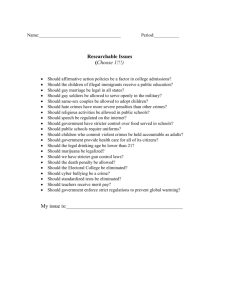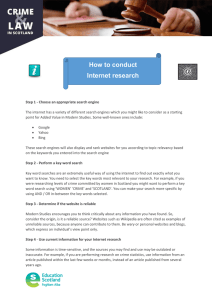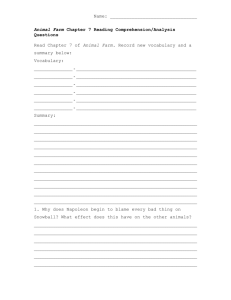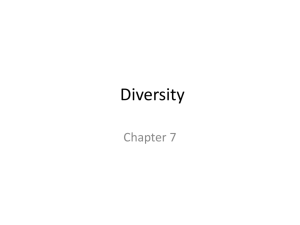Intro to Criminal Law Lesson Plans
advertisement
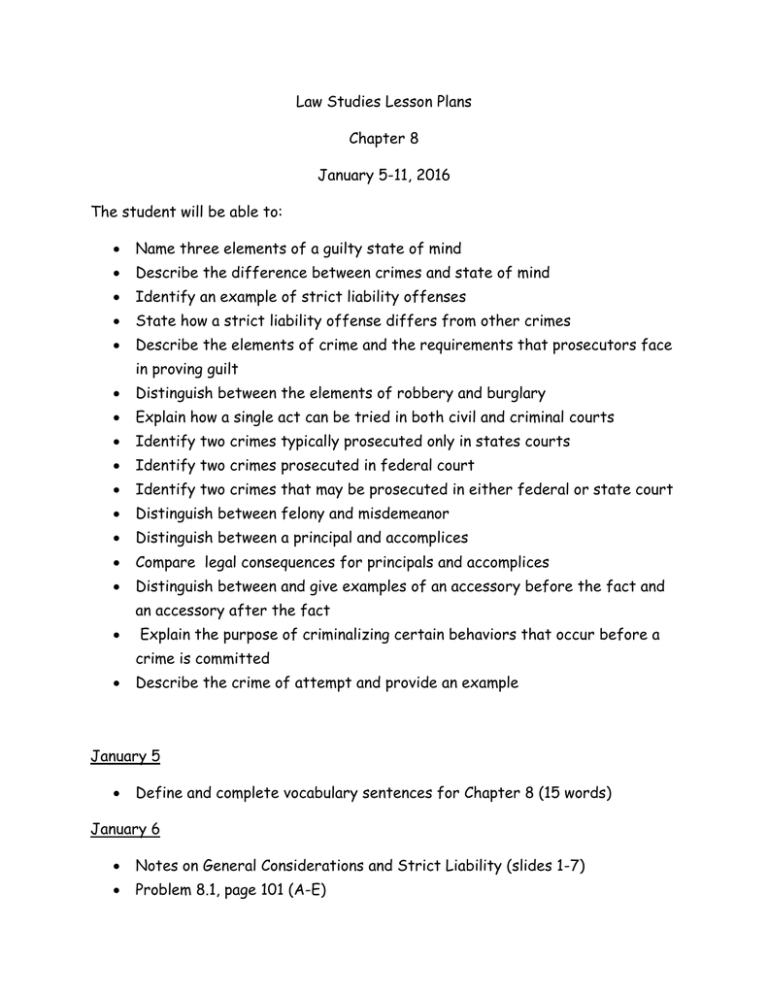
Law Studies Lesson Plans Chapter 8 January 5-11, 2016 The student will be able to: Name three elements of a guilty state of mind Describe the difference between crimes and state of mind Identify an example of strict liability offenses State how a strict liability offense differs from other crimes Describe the elements of crime and the requirements that prosecutors face in proving guilt Distinguish between the elements of robbery and burglary Explain how a single act can be tried in both civil and criminal courts Identify two crimes typically prosecuted only in states courts Identify two crimes prosecuted in federal court Identify two crimes that may be prosecuted in either federal or state court Distinguish between felony and misdemeanor Distinguish between a principal and accomplices Compare legal consequences for principals and accomplices Distinguish between and give examples of an accessory before the fact and an accessory after the fact Explain the purpose of criminalizing certain behaviors that occur before a crime is committed Describe the crime of attempt and provide an example January 5 Define and complete vocabulary sentences for Chapter 8 (15 words) January 6 Notes on General Considerations and Strict Liability (slides 1-7) Problem 8.1, page 101 (A-E) January 7 Notes on Federal and State crimes and classes and parties of crimes (slides 8-12) Problem 8.2, page 103 January 8 Vocabulary Quiz CH 8 Worksheet Notes on Preliminary Crimes (slides 13-16) The Case of the Drowning Girl, page 104 Problem 8.3, page 105 (A-D) Law In Action, page 106 January 11 Chapter 8 Test Define and complete vocabulary for Chapter 9
